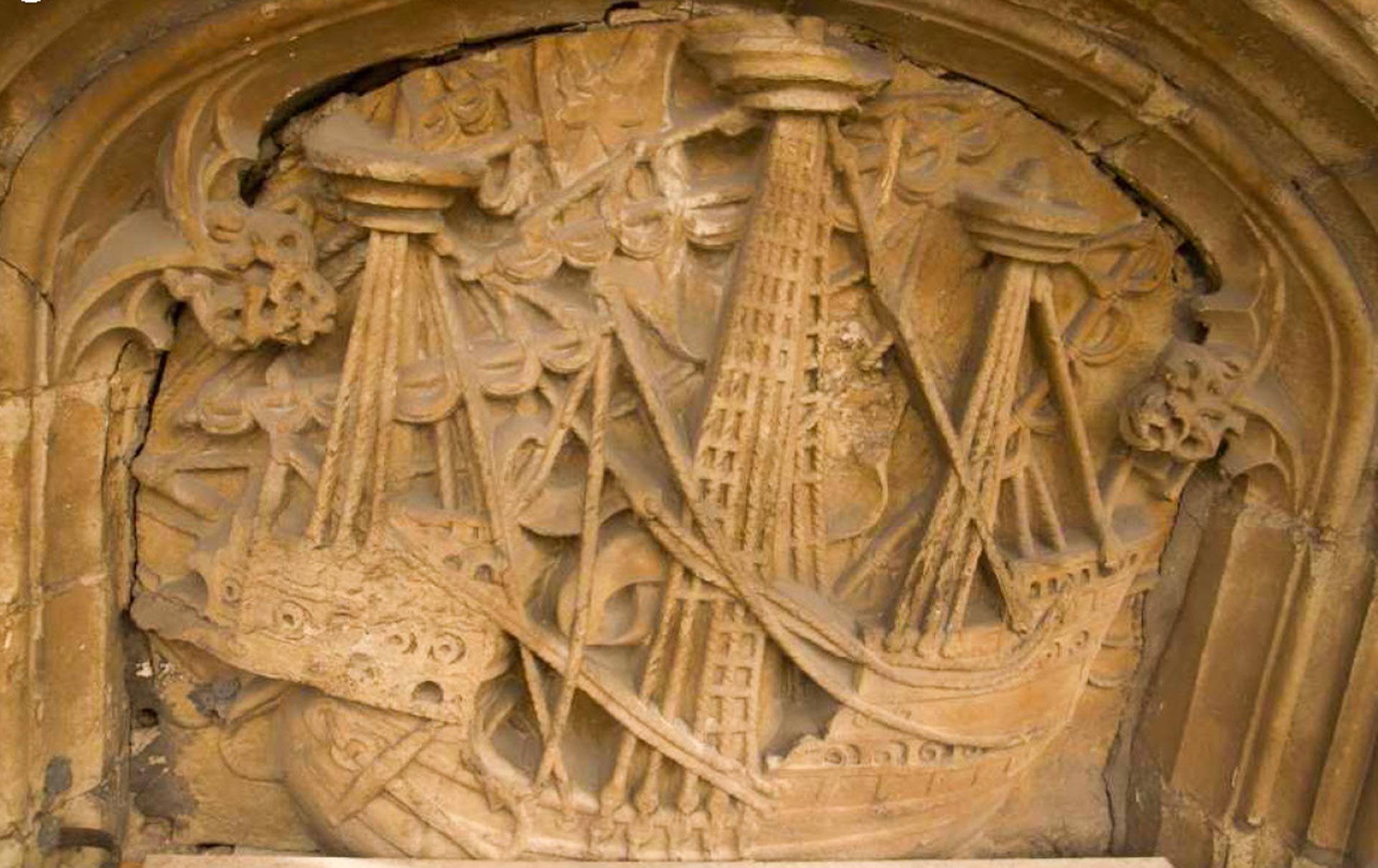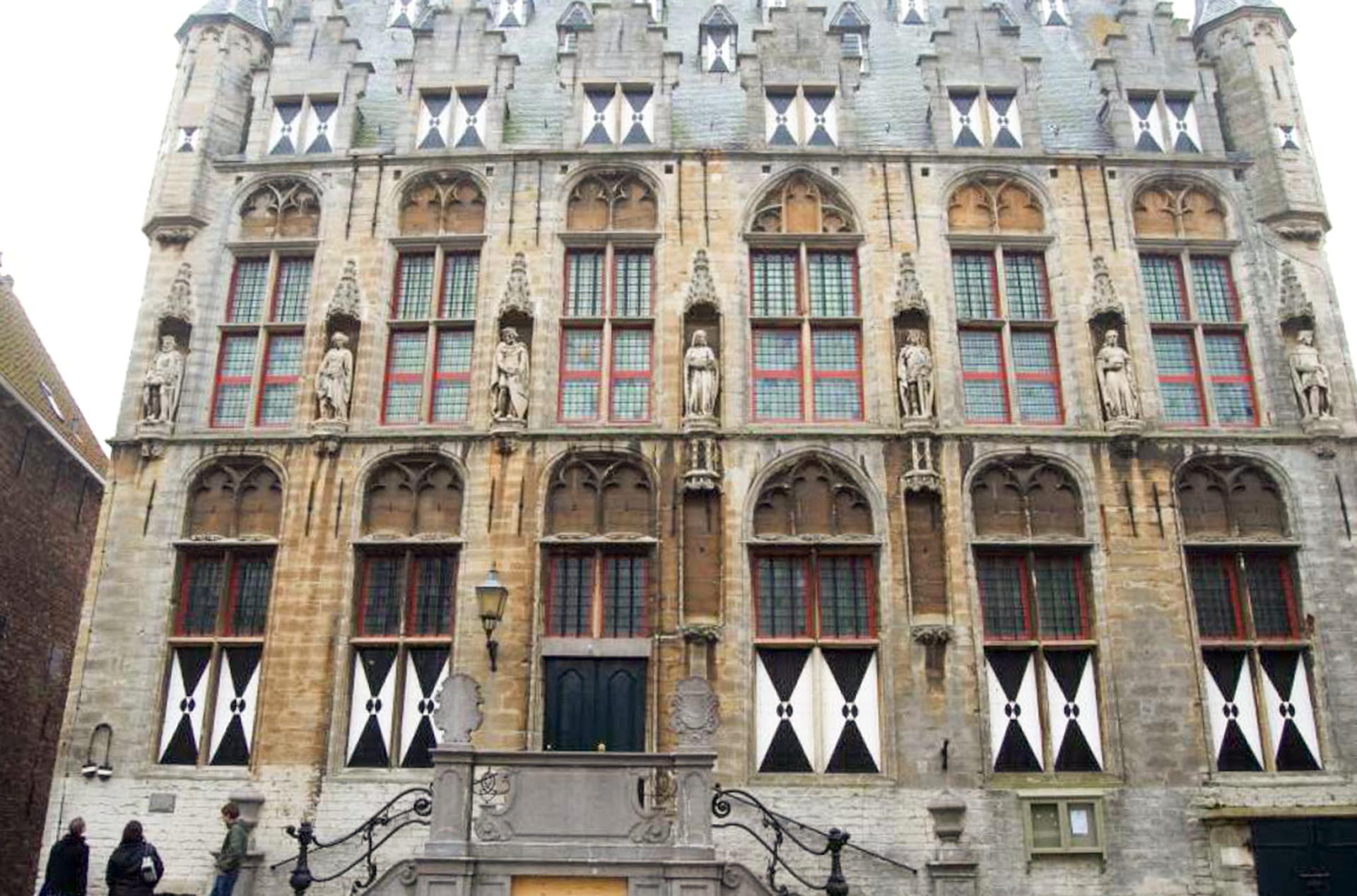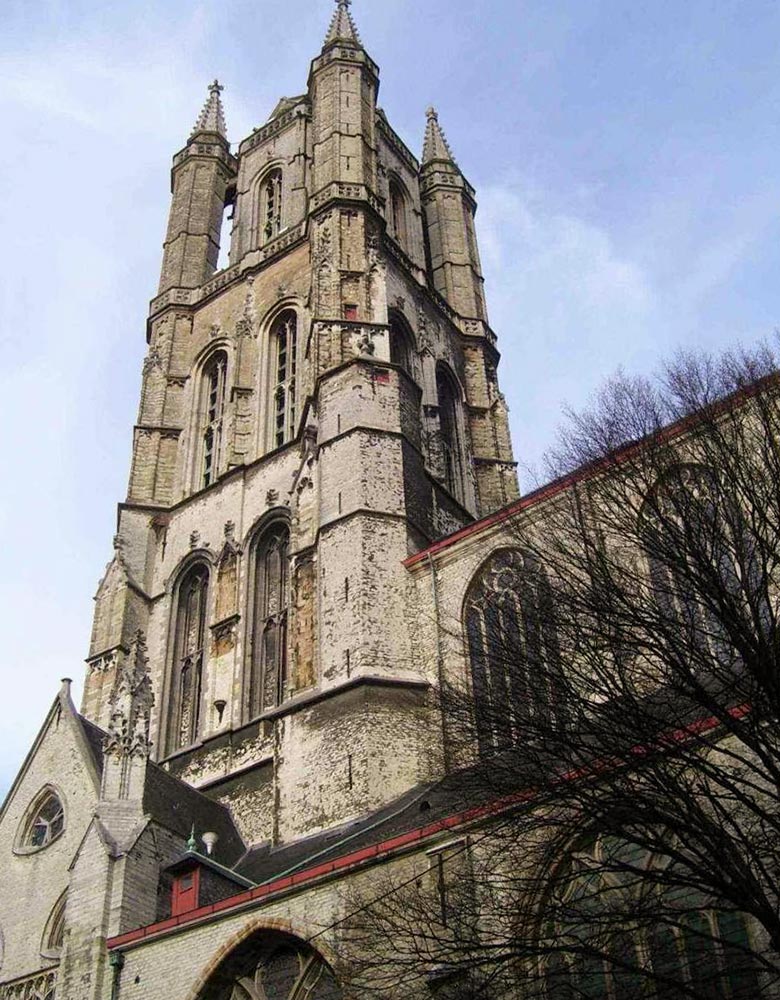
Bass-relief above the entrance of the Guildhall of the Free Boatmen (16th/17th century), Ghent, Belgium
Local native name
Year designation
Lithology
Aesthetics
Geological settings
Cenozoic – Eocene – Paleogene – Lede Formation
Location
Hinterland of Gent and Brussels, Flanders
Bass-relief above the entrance of the Guildhall of the Free Boatmen (16th/17th century), Ghent, Belgium
Erecting the Belgian Heritage
Archeological findings with intentional use of Lede stone as building material (e.g. water wells) date back to the Roman times. It’s main use, however, sets on in the high middle ages, from the 13th century onwards. A strong decline follows at the end oft he 18th century as a result of decreasing resources and increasing availability of -first local- alternative stone products. After a period of non-availability at the end oft he 19th century, specific explorations were set-up by contemporary resotation architects, leading to a short revival at the turn oft he 20th century into the 1920’s. After a second period non-availability, Lede stone became available as by-product from a new sandpit since t1966. At the turn oft he 21th century, renewed interest put this material at the forefront for monument restorations, like it was the case a century earlier.
The stone mainly used for building envelopes, in structural elements, walls, and in different kinds of sculptural work. Mainly used in bulk in Flemish gothic architectural styles, evolving into renaissance and baroque, where it is more specifically used in combination with other materials like brick. When available, used in several revival styles, but regularly subordinate to natural stones that were available in larger volumes.
Used in several listed monuments, including UNESCO World Cultural Heritage: Belfries of Belgium and France; Flemish Béguinages, Historic Centre of Brugge, La Grand-Place, Brussels, Plantin-Moretus House-Workshops-Museum Complex. Historically it was quarried in multiple small open air pits in the hinterland of Gent and Brussels and in underground pits in the Brussels area. Currently the stone is quarried in Balegro stone quarry.
- Author(s)
Tim de Kock


